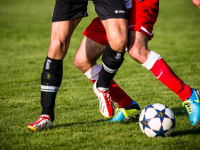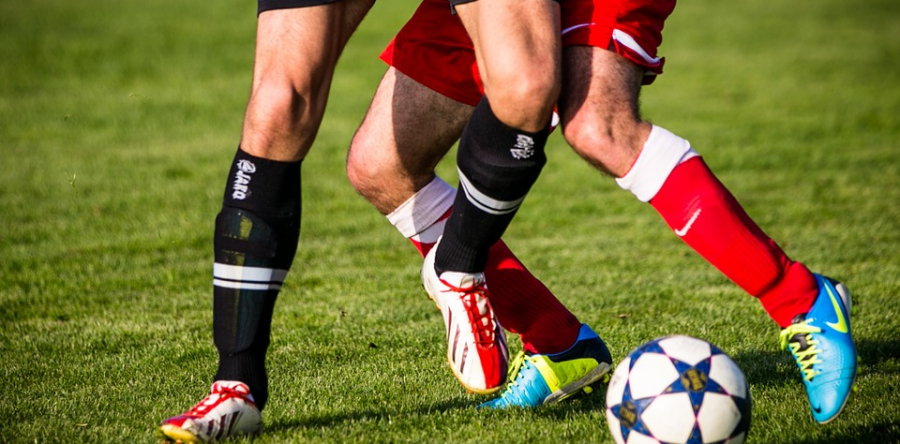
We perform close to 100 ACL reconstructions a year here at the Grossteam. Our patient population can vary from weekend warriors to high level collegiate athletes and everyone in between. However, no matter what level of sport or career a patient is trying to get back to I find myself answering similar questions everyday. When can I get back to activities? When will I be healed? Will it ever be the same? So here is my summary of ACL reconstruction and why the heck it takes so darn long to recover.
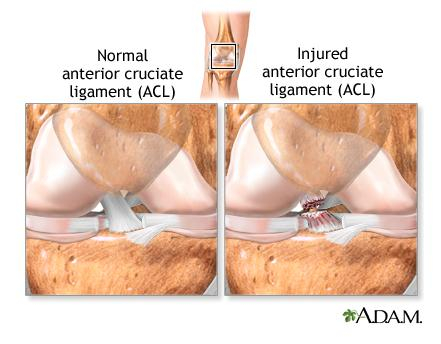
First lets review the structure of the ACL. (I do have a previous BLOG that goes into great detail about ACL tears/surgery if you need more review) The ACL attaches to the femur and tibia and is often torn with a twisting or hyperextension force to the knee. Reconstructing the ACL consists of removing the old ACL and forming a new ligament from either patient or cadaver tissue. This new ligament is then inserted into tunnels drilled in the bone in the previous ACL footprint and anchored with hardware. In our case metal buttons.
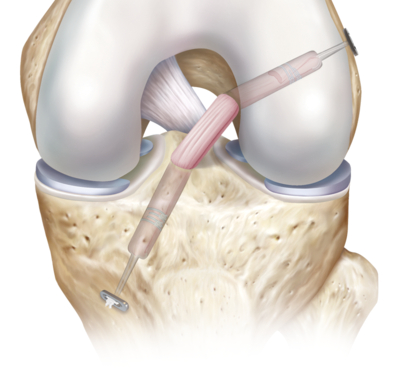
Graft healing begins in the tunnels and at the graft bone interface at 3 months post op.
Now is when the rehabilitation begins. Any tissue placed to make a new graft has been essentially cut off from its previous blood supply and will require a new blood supply to heal. This healing process will first begin at the bone graft interface and inside the bone tunnels. The graft tunnel healing occurs at 3 months post op. Then will continue to travel down the graft toward the center of the graft in the knee over the entire first year. (Did you hear me say that?) There is no healing of the graft at all until 3 months post op? Yes! That is why we consider patients at the highest risk of graft failure from 6-16 weeks post op. During this time their graft is at its weakest and their postoperative pain has worn off. This is the time period when I usually see kids jump off diving boards, attempt gym class, and pickup basketball games all against orders. It is also when we see the most re-tears of ACL grafts, which should now come as no surprise.
I know by now I may have you a bit freaked out by the whole notion of rehabilitating an ACL. Do not worry there is a lot of science on our side. We have a very organized and strict rehab program that we have developed to make sure our patients are as ready as possible to return to sport/work. First, we have a list of the best physical therapists in town; many we have worked closely with for years. Ask us for a recommendation before you rehab! Next, we use a testing based program to make sure you are ready to advance to the next step of the protocol. For instance not all patients are at the same step at the same time, it would be foolish to think they would all achieve goals at the same rate. We perform a test called a Biodex around 4 months post op to check the strength of the hamstrings and quadriceps in their operative verse nonoperative leg. If their strength is similar they may begin jogging and light plyometric activity, if not they continue strengthening and try again in a few weeks.
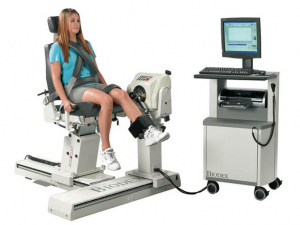
Example of a patient performing a Biodex test
Once a patient passes a Biodex test and is performing jogging and plyometrics without difficulty they may wish to pursue more advance activities. In this population we recommend more in depth testing with an advance movement screen called a Dorsavi. This test is a computer and sensor based test that can capture weakness and muscle imbalance during movement resembling athletic activity. The sensors are similar to those in cell phones in that they can tell where your body is in space. These are attached to the core and the legs and a process of repetitive planking, squatting, and jumping is performed. The sensors can tell if the patient is off balance, if the knee is out of alignment, and give the therapist information as to what muscle groups need strength. Then the patient is given a strength program tailored to their specific needs. Our patients usually take a Dorsavi test if needed between 8-10 months post op. Once they pass this test they return to their given sport.
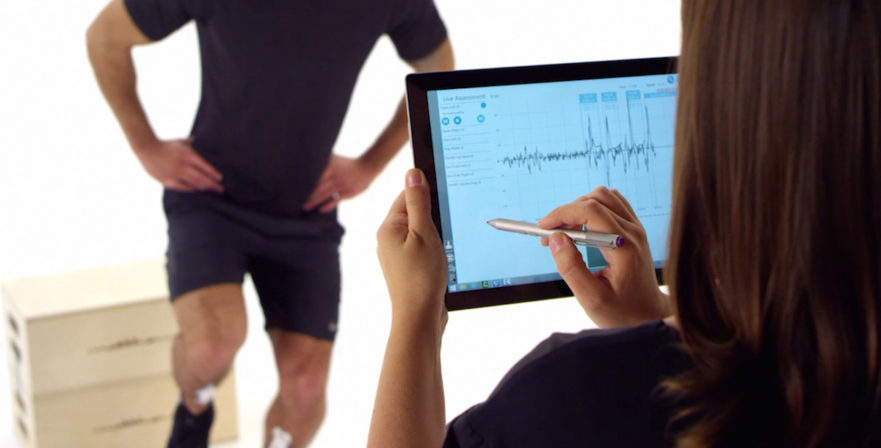
Example of a Dorsavi Test
ACL rehabilitation can seem daunting, however with our new advanced testing and surgical techniques we are able to return patients to the workplace and the field more safely. Our patients can be confident that their knee has been tested and they have achieved the necessary strength for return to play with less complication. After all its hard enough to play a sport at a high level, you shouldn't have to worry about your knee too!


